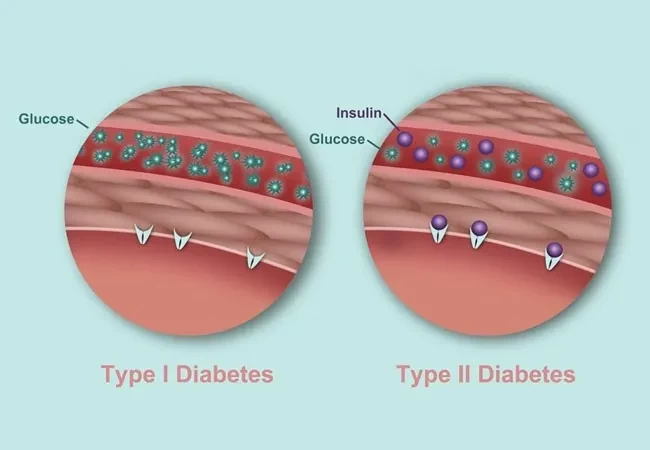Types of Diabetes
Types of Diabetes: Type 1, Type 2, and Gestational Diabetes
Types of DiabetesThere are two major types of diabetes; type1 diabetes and type 2 diabetes. Type 1 diabetes results from the body’s failure to produce insulin, and the person is required to inject insulin from the very beginning. Type 2 diabetes results from insulin resistance, a condition in which cells fail to use insulin properly, sometimes combined with a relative insulin deficiency to start of with. Insulin is a hormone produced by special cells; beta cells in the pancreas. Insulin is needed to move blood sugar into cells, where it is used for energy. Without enough insulin as in diabetic patients, glucose builds up in the bloodstream instead of going into the cells. The body is unable to use this glucose and hence energy in the form of glucose gets lost in urine.
Type 1 Diabetes
This type of diabetes is most commonly found in children, adolescents and sometimes in young adults. Exact cause of type1 diabetes is unknown but it is believed that an infection can cause the body to to destroy the insulin producing cells; beta cells in the pancreas. Hence body cannot produce any insulin to use glucose for energy resulting in increasing glucose level in the blood. Type 2 Diabetes Type 2 Diabetes Is A Lifelong Disease In Which There Are High Levels Of Glucose In The Blood And Also Used To Be Known As Non Insulin Dependent Diabetes In The Past. When You Have
Type 2 Diabetes,
Your Liver, And Muscle Cells And Fat Do Not Respond Correctly To Insulin. This Is Called Insulin Resistance. As A Result, Blood Sugar Does Not Get Into The Cells To Be Used For Energy. When Sugar Cannot Enter Cells, High Levels Of Sugar Build Up In The Blood. Type 2 Diabetes Usually Occurs Slowly Over Time. It Mostly Affects Adults, Both Male And Female Alike Who Are Over 40 Years Of Age. Family History And Genes Play A Large Role In Type 2 Diabetes. Low Activity Level, Poor Diet, Excess Body Weight Around The Tummy And Mental Stress Increase Your Risk. Obesity in childhood is giving rise to a new entity called type 2 diabetes in children. This was considered a rare phenomenon in the past but with the alarming rise of pediatric obesity, it is possible that we are going to detect more cases of type 2 diabetes than type 1 diabetes in future, as is happening in Japan.
